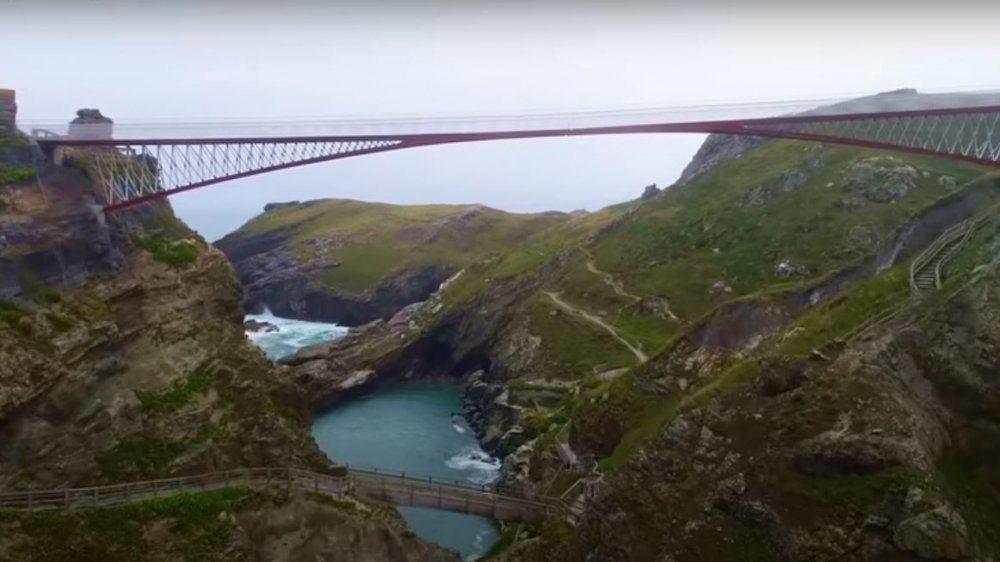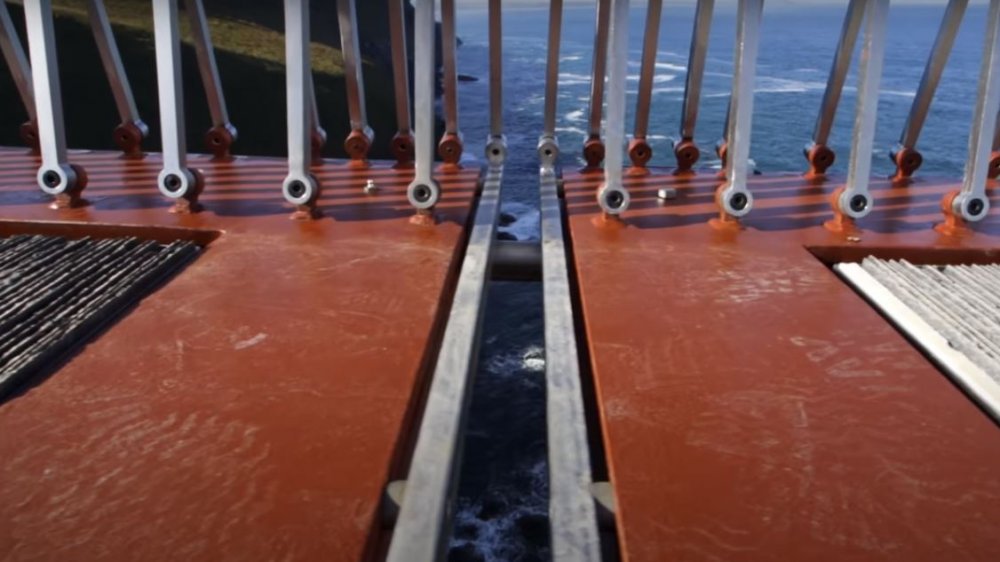Why The Bridge To Tintagel Castle Has A Gap In The Middle
The history of Tintagel Castle in Cornwall, England spans all the way back to the 5th century AD, as fragments of Mediterranean pottery attest. As described in The Telegraph, the castle was first mentioned by Geoffrey of Monmouth in his 1136 book Historia Regum Britanniae, who cited it as the location of King Arthur's mythical conception. Tintagel was used by numerous lords over the centuries, and the current ruins of the castle were built in the early 13th century by Richard, Earl of Cornwall. Sadly, the site slowly fell into disrepair, and the narrow, natural landbridge (wide enough for only 3 people across) connecting the castle over its foundation of windswept, oceanside cliffs collapsed nearly 500 years ago. Renowned poet Lord Tennyson played a large role in renewing interest in the castle when he wrote Idylls of the King in 1859, and since then Tintagel Castle has been the location of growing tourist interest.
English Heritage, a charity that tends to over 400 historical sites across England, including the world-famous Stonehenge, undertook reconnecting the two halves of Tintagel castle in 2017. The goal was to honor the ancestral legacy of the land, as well as garner new interest from visitors. A new, £4 million footbridge built over the space of the original, naturally formed landbridge would symbolize reconnecting with the past, as well as make it much easier for travelers to traverse the site, rather than going up and down its winding cliffside path.
Mind the gap
Installed in summer 2019, the new footbridge at Tintagel Castle is a minimalist, elegant, and quite impressive feat of engineering that has a unique feature cut across its center: a 40 mm gap between the two halves of the bridge. In the words of architect William Matthews, the gap "represents the transition between island and mainland, present and past, reality and legend," as he states in an interview with English Heritage. The walk across the bridge affords a view of the surrounding landscape, ocean, and castle not seen for 500 years.
The two halves of the bridge, called cantilevers, are 33 meters long, and are composed of 47.5 total tons of steel. To help the bridge feel like an organic part of the natural environment, there are 140 meters of oak comprising the bridge's handrail, and in a very cool design twist, the walkway itself is composed of 40,000 hand-split slate tiles, stacked vertically so that visitors walk along their packed-together edges. They were quarried only 3 miles away at a location that, at 1,000 years old, is arguably the oldest in-use quarry of its kind.
Nichola Tasker, English Heritage's Head of National Projects, says that they are also redoing the flow of the site to carry tourists along a specific route that accentuates various locations, teaches about the castle's history, and preserves nature in the process. Since the new bridge was built, thousands of visitors have already shown renewed interest in Tintagel Castle.

